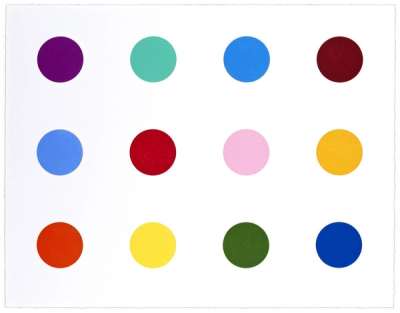
Ala-His

Ala-His
Signed Print
Damien Hirst
£8,500-£13,000Value Indicator
$18,000-$27,000 Value Indicator
$15,000-$24,000 Value Indicator
¥80,000-¥120,000 Value Indicator
€10,000-€15,000 Value Indicator
$90,000-$130,000 Value Indicator
¥1,590,000-¥2,430,000 Value Indicator
$11,000-$17,000 Value Indicator
AAGR (5 years) This estimate blends recent public auction records with our own private sale data and network demand.
There aren't enough data points on this work for a comprehensive result. Please speak to a specialist by making an enquiry.
Medium: Woodcut
Edition size: 55
Year: 2011
Size: H 30cm x W 23cm
Signed: Yes
Format: Signed Print
TradingFloor
Track this artwork in realtime
Watch artwork, manage valuations, track your portfolio and return against your collection
Track auction value trend
Auction Results
| Auction Date | Auction House | Location | Hammer Price | Return to Seller | Buyer Paid |
|---|---|---|---|---|---|
| December 2023 | Tate Ward Auctions | United Kingdom | |||
| November 2016 | Bonhams New Bond Street | United Kingdom |
Meaning & Analysis
Ala-His is a woodcut print from Damien Hirst’s 40 Woodcut Spots series from 2011. Released in a limited edition of 55, the vertically-oriented print shows five rows of spots that are identical in size and shape, each depicting a different colour. Across the artist’s vast oeuvre every spot painting represents a unique combination of colours. The 40 Woodcut Spots series is an exploration of colour and form that is distinctly Hirstian.
Hirst has said of these works, “To create that structure, to do those colours, and do nothing. I suddenly got what I wanted. It was just a way of pinning down the joy of colour.” This series is representative of the spot paintings that constitute some of Hirst’s most recognisable works. There are over 1000 spot paintings in existence, dating from 1988 to 2011.
Integral to the impact of the spot paintings is its endlessness and infinite potential towards many various colour combinations. This print is almost mathematical in its formulaic composition that is repeated across the series, with grids of various sizes. In the 1980s, the spot paintings marked a shift in Hirst’s artistic career, where he began to employ assistants to complete the painstaking and laborious task of producing these works. The apparent lack of human intervention in these works further emphasises the mathematical precision that underlines their compositions.
Damien Hirst, born in Bristol in 1965, is often hailed the enfant terrible of the contemporary art world. His provocative works challenge conventions and his conceptual brilliance spans installations, paintings, and sculptures, often exploring themes of mortality and the human experience. As a leading figure of the Young British Artists (YBA) movement in the late '80s, Hirst's work has dominated the British art scene for decades and has become renowned for being laced with controversy, thus shaping the dialogue of modern art.



















